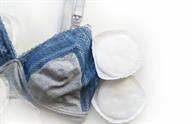How to Care for Yourself After Giving Birth by C-Section (Postpartum Care After Cesarean Delivery)
These are ways to care for yourself after giving birth by C-section. Your health care team may also give you more specific instructions. If you have questions, contact your health care team.
Caring for your cut from surgery
Bleeding from the vagina
- Bleeding after a c-section is called lochia. Use pads.
During the first week after birth, the lochia is often similar to a period.
Over the next few weeks, it will slow and change to light yellow-brown discharge.
For most females, lochia stops completely by 4–6 weeks after birth, but it can vary.
- Change your pads often. Watch for any changes in your flow, such as:
More bleeding.
A change in color.
Large blood clots.
-
Do not use tampons or douches until your provider says it's safe.
-
If you aren't breastfeeding, your period should return 6–8 weeks after delivery. If you're breastfeeding, your period may not return until you stop.
Caring for your breasts

Sex
-
Ask your health care team when you can have sex again.
-
You can get pregnant after giving birth, even if you've not had your period. Ask about birth control or family planning.
Follow these instructions at home:
Medicines
-
Take medicines only as told.
-
If you were given antibiotics, take them as told. Do not stop taking them even if you start to feel better.
-
Make sure the medicines you take are safe with breastfeeding. Ask your health care team or lactation specialist if you're not sure.
-
Take your prenatal vitamins until you're told to stop.
Activity
-
Rest as much as possible. Try to nap while your baby is sleeping.
-
If possible, have someone help you at home until you're able to do your usual activities.
-
Ask if it's OK for you to lift. Do not lift anything until your provider tells you it's OK.
-
Do not take baths, swim, or use a hot tub until you're told it's OK.
-
Ask what things are safe for you to do at home. Ask when you can go back to work or school.
Eating and drinking
-
Drink more fluids as told.
-
To help prevent or treat trouble pooping (constipation), eat high-fiber foods every day.
-
Choose healthy eating to support breastfeeding and healing.
- Drinking alcohol soon after giving birth can be dangerous. It can affect your judgment and ability to safely care for your baby.
Do not drink alcohol if you're breastfeeding. This is the safest option.
If you drink alcohol when breastfeeding, wait at least 2 hours after a single drink before feeding your baby.
General instructions
-
Do not smoke, vape, or use nicotine or tobacco. Doing this can slow down healing.
-
Keep all follow-up visits. Your health care team will check your blood pressure and your healing after birth.
Contact a health care provider if:
-
You have a fever or other signs of infection.
-
You have a very bad headache that doesn't go away, or you have a headache that affects your ability to see.
-
You have bleeding that soaks through one pad an hour, or you have blood clots the size of an egg or larger.
-
Your breasts become red, hard, or painful.
-
You have trouble holding pee or keeping pee from leaking.
-
You have discharge in your vagina that smells bad.
-
You feel unusually sad or worried.
-
You have chest pain or trouble breathing.
-
You have sudden and very bad pain in your leg.
-
You faint or you have a seizure.
- You have any of these symptoms and you can't reach your health care team:
A fever or other signs of infection.
Bleeding that's soaking through one pad an hour, or blood clots the size of an egg or larger.
A very bad headache that doesn't go away, or a headache that affects your ability to see.
-
You have thoughts about hurting yourself or your baby.
-
You have other thoughts or feelings that worry you.
These symptoms may be an emergency. Take one of these steps right away:
This information is not intended to replace advice given to you by your health care provider. Make sure you discuss any questions you have with your health care provider.
